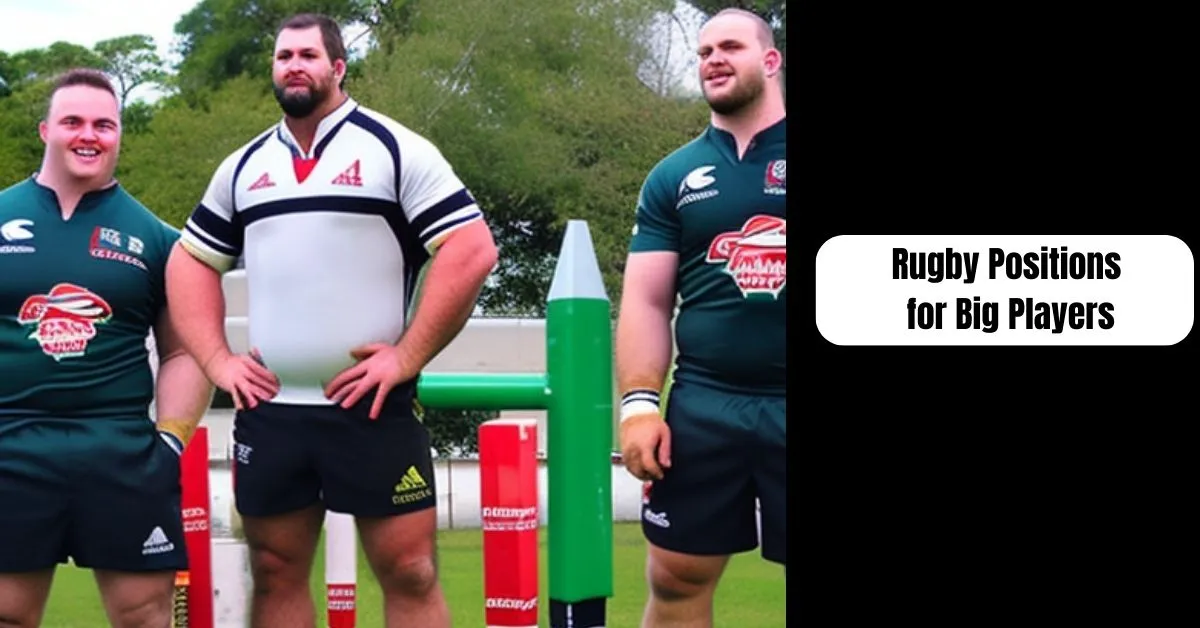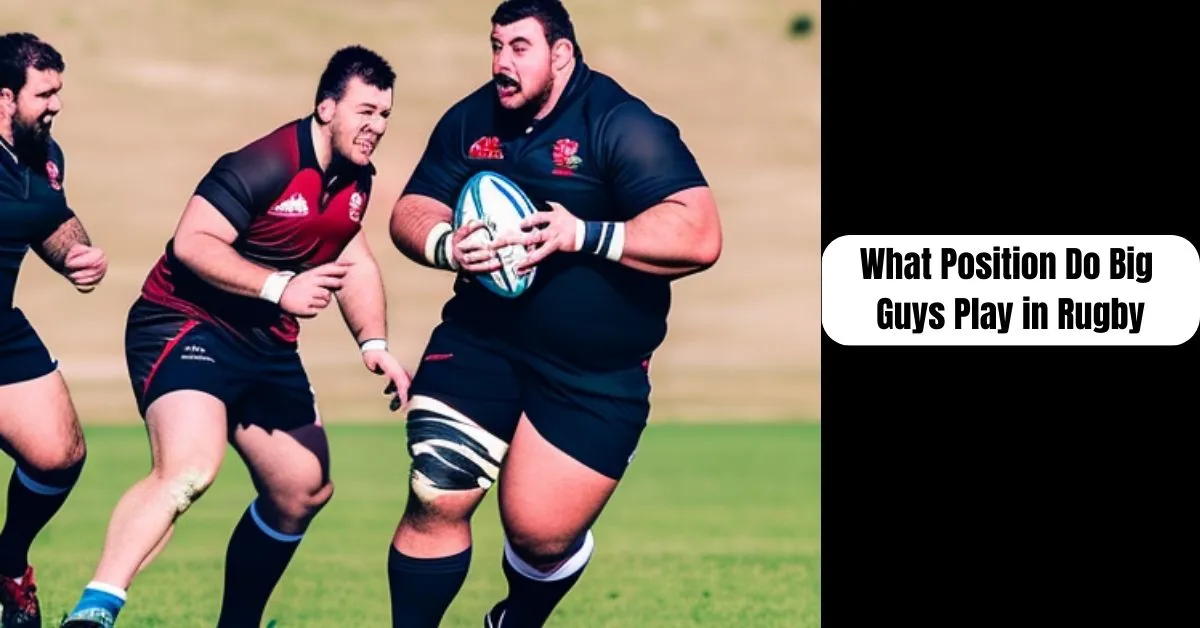If you are big guys and think of rugby, you may envision big, burly players charging down the field, tackling opponents, and scoring tries. But have you ever wondered what position these “big guys” play on the rugby field? While size and strength are certainly advantageous in this sport, there is more to it than meets the eye.
Rugby is a physically demanding sport that requires a diverse range of skills and abilities. Each player on the field has a specific role and position, and the big guys have their own unique place in the game. Understanding the different positions and roles of these players can give you a deeper appreciation for the strategic aspects of rugby.
In rugby, the big guys often play crucial roles in the forward pack, where their size and strength can be utilized to dominate in scrums, lineouts, and rucks. However, their contributions extend beyond just brute force, as they also need to possess agility, stamina, and tactical awareness. Let’s take a closer look at the positions these big guys typically occupy on the rugby field and the responsibilities they hold.
Exploring Rugby Positions for Big Players: A Look at Playing Roles

Prop:
One of the most critical positions in rugby is that of the prop. These players occupy the front row of the scrum and are responsible for providing stability and power during set pieces. Their primary role is to support their own team by anchoring the scrum and counteracting opposition pressure. Props require tremendous upper-body strength, a low center of gravity, and a robust physique to excel in this position.
Locks (Second Row):
The second-row positions, or locks, are usually occupied by tall and robust individuals. They stand directly behind the props during scrums and provide vital support by binding tightly with them. Additionally, locks play an essential role in lineouts—a key aspect of rugby strategy where they are often lifted by teammates to compete for aerial possession.
Number 8:
The number 8 position completes the pack in rugby and requires an athletic individual who possesses both strength and agility. This position involves linking up with teammates during attacking plays but also being a vital defensive asset when needed. Number 8s have excellent ball-handling skills while possessing sufficient speed to make impactful runs through gaps in opponents’ defenses.
Flanker:
Flankers are versatile individuals who can fulfill multiple roles depending on game situations. Big guys playing as flankers often offer exceptional defensive prowess due to their size and physicality. They specialize in tackling opponents, contesting turnovers at breakdowns, disrupting opposition tactics, or joining attacking moves as ball-carrying threats.
Center:
While traditionally known as a position for agile and skillful athletes, larger players can also contribute to the center position. Big centers provide brute force in contact situations, breaking the defensive line with power running while attracting multiple defenders. They create space for their teammates by drawing opposition attention and offloading to support runners.
Wing:
Typically reserved for the quickest and most agile players on the field, wingers can also benefit from size in certain scenarios. Big wingers offer an advantage by providing a physical presence during aerial duels, using their size to dominate contested high balls or win collisions against smaller opponents. Their strength allows them to break through tackles or hold off defenders, aiding in creating scoring opportunities.
Fullback:
The fullback is a position that demands an all-round skill set and spatial awareness. Though not necessarily a big player, fullbacks benefit from height and strength when it comes to contesting high balls or returning kicks effectively under pressure. Their presence as larger individuals provides stability during defense and adds a physical dimension when running into attacking lines.
The Role of the Big Guys in Rugby
In rugby, the big guys play a crucial role on the team. They are typically positioned in the front row and second row of the scrum, where their size and strength are essential for winning possession of the ball. These positions are known as props and locks.
Props are typically the largest players on the team. They provide stability and power in the scrum, which is a set-piece where eight players from each team push against each other to contest possession of the ball. Props use their bulk and strength to drive against opposing forwards, aiming to gain control of the ball for their team. They also have an important role in providing support to the hooker during line-outs, another set-piece where players lift one another to contest a high throw-in of the ball.
Locks play alongside props in both scrums and line-outs. Their main role is to provide additional power and stability in these situations. Locks are usually tall athletes who excel at jumping, giving them an advantage when competing for high throws in line-outs. In addition, they contribute to driving forward in scrums by binding tightly with their teammates.
Both props and locks also have defensive responsibilities throughout the game. Their size makes them effective at stopping opposition players from gaining ground with powerful tackles. They form a strong defensive wall that is difficult for opponents to penetrate.
Additionally, big guys often serve as enforcers on the field by using their physicality to intimidate opponents. Their sheer presence can create a psychological advantage for their team, making it more challenging for opponents to execute their game plan effectively.
FAQs About Rugby Positions for Big Players
What positions are typically played by big guys in rugby?
Big guys in rugby often excel in positions like Prop, Lock, and Number 8. These positions require strength, power, and a physical presence on the field.
What is the role of a Prop in rugby?
Props are integral to the scrum, providing stability and power to push against the opposition. They also contribute in rucks, tackles, and support play.
What responsibilities do Locks have in rugby?
Locks are known for their lineout skills, being lifted to secure ball possession. They’re also essential in scrums, and their physicality aids in breakdowns.
How do big guys excel as Number 8 players?
Number 8 players are versatile and often serve as a link between forwards and backs. They play a role in scrums, lineouts, and ball carrying, utilizing their size and strength to gain ground.
Can big guys play in other positions as well?
While big players often find their niche in forward positions, some may transition to roles like Flanker or Centre, depending on their skill set and agility.
Are big guys limited to playing only forward positions in rugby?
While big players often thrive in forward positions due to their size and strength, some may also excel as Front Row players, utilizing their attributes in the scrum and lineout. However, the modern game values versatility, and big players with agility and skill can make an impact in other positions like Flanker or Centre.
How do big guys contribute to the team’s overall strategy?
Big guys play a crucial role in setting the tone of the game through their physicality. They create a strong platform in scrums and lineouts, helping the team secure possession. Their ball-carrying abilities and ability to draw in defenders also create opportunities for the backline to exploit gaps and score points.
Conclusion:
The big guys in rugby play crucial positions that require size, strength, and physical dominance. As props and locks, these players provide stability in the scrum and use their power to win possession of the ball. Their contributions are vital not only in set-pieces like the scrum and line-outs but also in providing a strong platform for their team’s offense and defense. With their imposing presence on the field, the big guys play an indispensable role in the game of rugby.

I’m Robert Jesus & a dedicated writer with a unique focus: the lifestyle needs of larger individuals. I’m passionately write about the day-to-day necessities of big guys or fat guys, from clothing (shirts, shorts, t-shirts, etc) to longboards, skateboards, chairs, shoes, and hammocks. My work emphasizes the importance of inclusivity, shedding new light on a niche often overlooked in traditional lifestyle narratives. For big more updates stay with my social platforms like Pinterest, Twitter, Reddit, medium, and Quora

